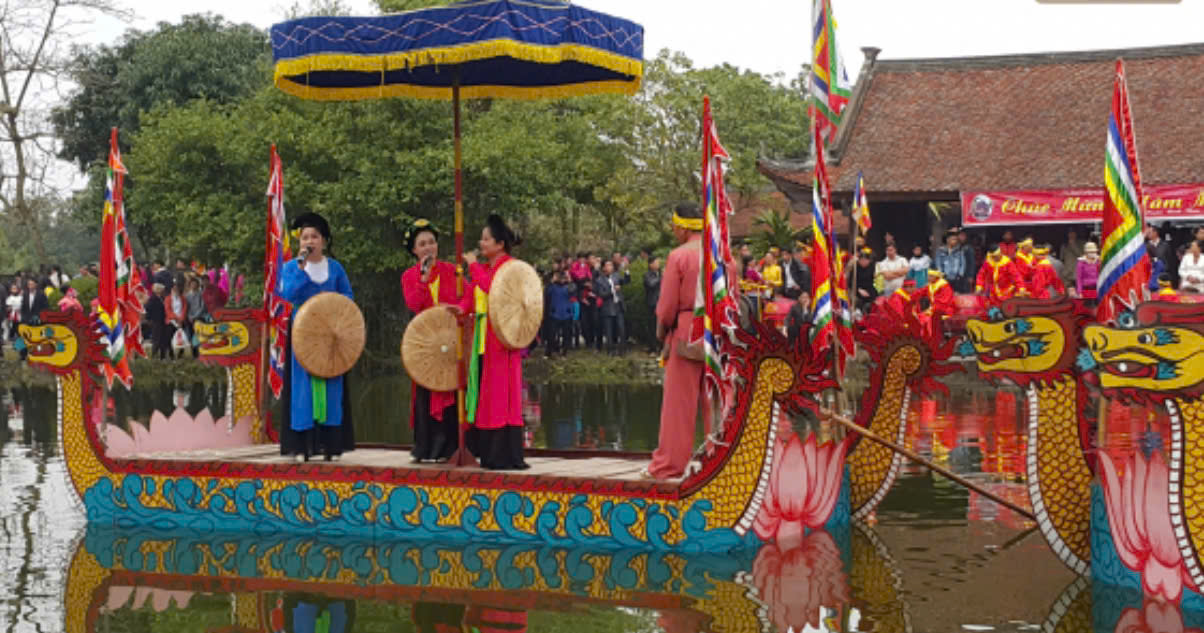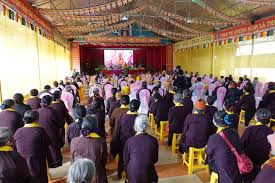The Keo Pagoda Festival, with the custom of worshiping the Zen Master Không Lộ, has attracted people of all ages and social classes in the region, following the biannual spring and autumn cycles. For the people of Thái Bình, Zen Master Không Lộ is not only a respected Zen master but also a saint with great influence and authority. In his lifetime, he worked as a fisherman and only became a monk at the age of 29. It is said that he once cured the illness of King Lý, earning him the title of National Teacher.
The rituals during the three days of the autumn festival (in September) at Keo Pagoda are both agricultural celebrations and entertainment competitions, as well as a historical festival. The festival is a historical performance about the life of Zen Master Dương Không Lộ, in which cultural activities and folk arts blend with religious ceremonies.
Within the framework of the festival, there are many rituals to express the people’s deep respect and gratitude towards the deities and ancestors of the village. Through these rituals, the villagers pray for the deities’ protection, blessing them with abundant harvests, peaceful lives, and prosperity.
A special feature of the festival is the procession of the saint’s palanquin around the pagoda, which is very solemn on the morning of September 14th. This is one of the grandest processions in the festivals of the Red River Delta. A massive procession with thousands of participants is held to carry the saint to the capital to heal the king, and also symbolizes the saint’s life connected with the water and river. The uniqueness of this procession is also a form of expression, emphasizing the respect and solemnity with which the people of Keo village worship their deities.
In addition, there are lively festival activities such as: boat racing; boat processions; frog-catching contests; net casting; duck catching; and pottery smashing… These create a vibrant atmosphere along the winding riverbanks, with music and drums echoing in the air, and thousands of spectators filling both sides of the embankment.
At the end of the Keo Pagoda festival, there is a special ritual known as the "Offering to the Saint," a ceremony unique to this festival. The Saint's offering dance is an ancient dance performed with water buffalo and frog-catching movements.
Visitors who come to Keo Pagoda for pilgrimage not only pray to Buddha and the saint but also have the opportunity to admire an architectural masterpiece that is rarely preserved in other ancient cultural structures today. Keo Pagoda has maintained 17 buildings with 128 rooms spread across 2,022 square meters. The main architectural structures include: the three gates, the Buddha pagoda, the saint’s hall, the bell tower, the corridor, the monk’s quarters, and the tower garden.
At the Autumn Festival at Keo Pagoda, we can still find the beauty of the local people's spiritual culture through religious rituals and some traditional customs. In addition, through traditional folk games and artistic performances, the festival reflects the lifestyle of the agricultural communities of the Red River Delta in general, and Thai Binh in particular.
!["[KTMH] Trailer | WHAT TO DO TO MAKE SUMMER HOLIDAYS MORE MEANINGFUL?"](https://i3.ytimg.com/vi/s0VUGa1v6uw/maxresdefault.jpg)

.jpeg)

.jpg)